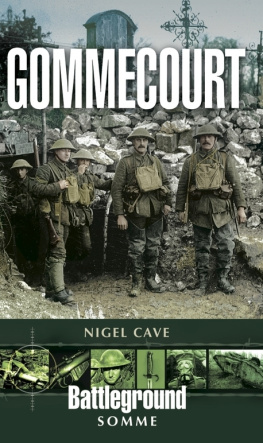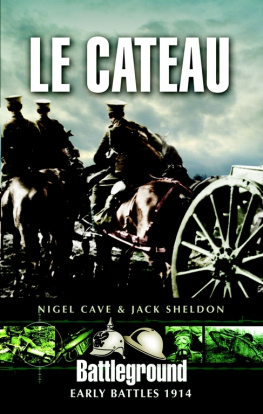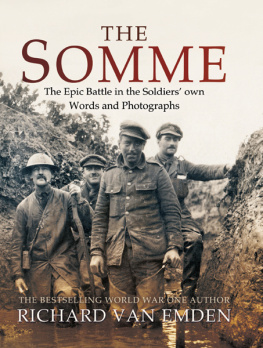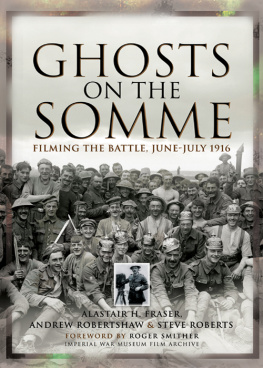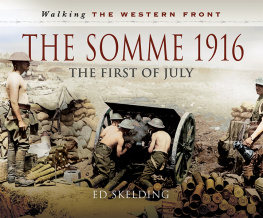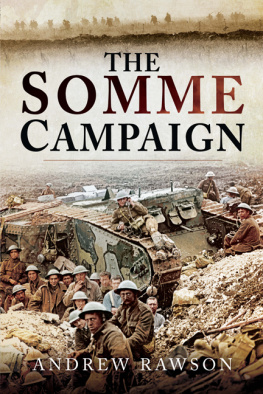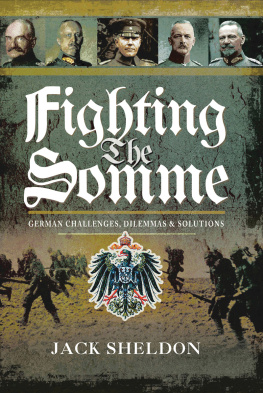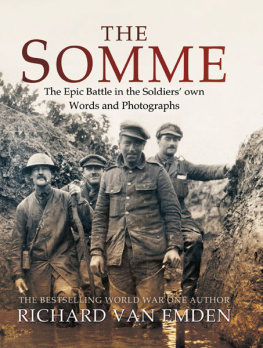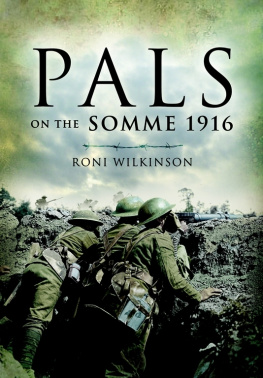Nigel Cave - Gommecourt
Here you can read online Nigel Cave - Gommecourt full text of the book (entire story) in english for free. Download pdf and epub, get meaning, cover and reviews about this ebook. year: 1998, publisher: Pen and Sword, genre: Non-fiction. Description of the work, (preface) as well as reviews are available. Best literature library LitArk.com created for fans of good reading and offers a wide selection of genres:
Romance novel
Science fiction
Adventure
Detective
Science
History
Home and family
Prose
Art
Politics
Computer
Non-fiction
Religion
Business
Children
Humor
Choose a favorite category and find really read worthwhile books. Enjoy immersion in the world of imagination, feel the emotions of the characters or learn something new for yourself, make an fascinating discovery.
- Book:Gommecourt
- Author:
- Publisher:Pen and Sword
- Genre:
- Year:1998
- Rating:5 / 5
- Favourites:Add to favourites
- Your mark:
- 100
- 1
- 2
- 3
- 4
- 5
Gommecourt: summary, description and annotation
We offer to read an annotation, description, summary or preface (depends on what the author of the book "Gommecourt" wrote himself). If you haven't found the necessary information about the book — write in the comments, we will try to find it.
Gommecourt — read online for free the complete book (whole text) full work
Below is the text of the book, divided by pages. System saving the place of the last page read, allows you to conveniently read the book "Gommecourt" online for free, without having to search again every time where you left off. Put a bookmark, and you can go to the page where you finished reading at any time.
Font size:
Interval:
Bookmark:
This book is largely based on the material provided by the historians of regiments and divisions; and by the Official Historian. These histories can be of variable quality, but there was a particularly rich seam to mine in the array of histories produced by the battalions of the two Territorial divisions with which I was chiefly concerned at Gommecourt.
For other material I am indebted to Ralph Whitehead of New York State, USA for German translations and illustrations; to Norbert Krger of Essen in Germany for the loan of much valuable material; to Jim Walton for information and illustrations on the Tamworth Territorials, part of 6/North Staffords; to Colonel Pat Love and the Worcesters RHQ for material relating to the Rev Tanner, MC*; to the RHQ of the RAMC at Millbank for the use of the painting of Captain Greens VC action as a cover for this book; to Robert and Margaret Tedd for material relating to Margarets father, Harry Roberts MM; and to Bill Mitchinson for permission to use some of his maps produced for his book Gentlemen and Officers.
Particular thanks are due to Richard Brucciani, who has once more given of his time and his plane to fly me over the battlefields, thereby enabling me to make the most of the possibilities of aerial photography.
Various people have accompanied me on shorter or longer visits to this particular battlefield; my sister, Jackie; my father, Colonel Terry Cave, along with Colonel Dick Burge and Wing Commander Martin Sparkes; and during a frantic weekend of commemoration ceremonies at Beaumont Hamel and Vimy in November 1997, Colonel Phillip Robinson and his wife Mary. To them all many thanks for patience, interest and companionship.
On my visits to the Somme I have traditionally stayed with Mike and Julie Renshaw at their famously comfortable Bed and Breakfast accommodation, Les Galets, in Auchonvillers; and I have also descended upon Avril Williams and her family in their similar establishment in the same village, and enjoyed some excellent baguette lunches.
I have continued to enjoy working with Roni Wilkinson at Pen and Sword, who continues to put so much effort into making this series of books work; it is good to see the tradition continued by his son, Paul.
As ever I am grateful for the first class service offered by the staff of the Commonwealth War Graves Commission, who have patiently answered questions and supplied me with registers on their admirable loan system. I would in particular like to pay tribute in this book to Beverley Webb, who retired from the CWGC in the autumn of 1997.
I am also grateful to the farmers of the Gommecourt area who seem now to be able to take in their stride the sight of British registered vehicles in places where no vehicle in its right mind should be. Invariably they have managed to wave cheerily - probably anything to avoid contact with the mad British!
Finally grateful thanks to many of the regulars that I meet in France and Belgium who provide welcoming faces or, in the case of Janet Fairgrieve at Delville Wood, the joys of a glorious cup of coffee. All of them make trips over there a real pleasure.
There is an enormous amount of literature on the Somme. What is offered below can merely be taken a as sample of what is either still in print or readily available from the second hand market.
The First Day on the Somme, Martin Middlebrook. This is one of the great books about the first day of any battle, and one of the first to make use of personal accounts; probably still the most successful of its type. The Somme, A H Farrar-Hockley. An excellent overview of the whole battle by both a distinguished general and academic, who is also responsible for the Official History of the Korean War and a biography of Gough. Somme, Lyn Macdonald. A highly readable account of the battle, making extensive use of personal recollections. The 1916 Battle of the Somme : A reappraisal , Peter Liddle. This book takes into account some of the revisionist writing by academics, who have now begun to move from the blanket butchers and bunglers condemnation of British commanders.
There is a whole range of guides to the Somme battlefields.
By far the best general guide to the memorials, cemeteries and what remains along the old British front line (though it does extend down to and include Verdun) is the late Rose Coombs, Before Endeavours Fade, which has been reprinted and revised extensively over the years that it has been in publication. An essential vade mecum for the tourer. Martin and Mary Middlebrook have produced a superb and readable guide to the area, The Somme Battlefields.
Major and Mrs Holts Battlefield Guide to the Somme is relatively new. It is profusely illustrated, follows suggested routes with timings, and comes complete with a most helpful map indicating all the places of interest, cemeteries, memorials and so forth. It is an encyclopaedic survey of what remains on the battlefield.
Paul Reeds Walking the Somme is published in this series, and offers a range of walks all over the Somme battlefield, including one at Gommecourt. It is well illustrated, full of information and provides good, clear sketch maps to follow.
Autobiographical accounts have been specifically mentioned, as appropriate, in the body of the book.
One of the finest autobiographical accounts of the Great War, Four Years on the Western Front , was published in 1922 and republished ten years or so ago by the London Stamp Exchange (Naval and Military Press) in one of their series of most useful reprints. Its author was anonymous in the first edition, but was later identified as Aubrey Smith. He joined the London Rifle Brigade in August 1914, went to France in January 1915 and in September 1915 joined the transport section. He served throughout the war and by the armistice had won the MM (August 1917) and a Bar in November 1918. His is a literate, detailed and fascinating account of a Territorial battalion in the Great War and is strongly recommended.
See maps on pages 16, 28, 127,136
Smith describes the days before the battle and the problems of bringing supplies to the front, an unglamorous aspect of war and one which is all too frequently ignored in favour of the glamour of the events in and around the front line.
The Brigade horse lines were established on 21 May at Bayencourt, a village to the north west of Sailly au Bois, itself about a mile to the west of Hebuterne. Smith and his companions had reached the spot after an overnight stay at St Amand. The billet allocated was far from satisfactory; it
roused roars of merriment when we were introduced to it. It was a dilapidated barn with little roof, collapsing sides and an earth floor, the latter being full of ruts and holes. (One) said he would rather sleep in a midden [a very ripe manure heap] .
Road below Bayencourt along which Aubrey Smith made his way to Hebuterne. It became known as Happy Valley.
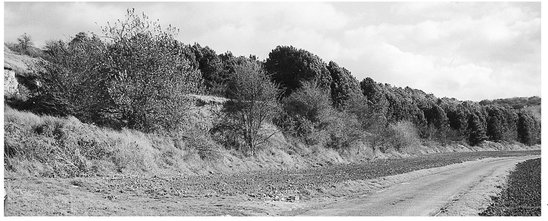
Before they could establish a bivvy (bivouac, constructed essentially of groundsheets and whatever came to hand to provide shelter), he and a friend were instructed to take the company cookers up to Hebuterne with the ration convoy.
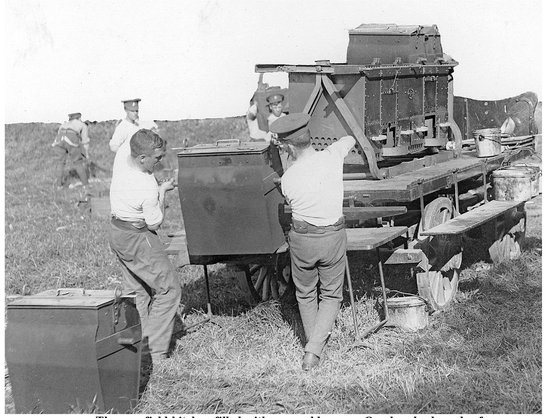
The new field kitchen filled with removable ovens. One hundred meals of soup, joints, vegetables, tea etc., could be served. Very little coal was required as the fire was kept going with wood or dry refuse found on the field. TAYLOR LIBRARY
Font size:
Interval:
Bookmark:
Similar books «Gommecourt»
Look at similar books to Gommecourt. We have selected literature similar in name and meaning in the hope of providing readers with more options to find new, interesting, not yet read works.
Discussion, reviews of the book Gommecourt and just readers' own opinions. Leave your comments, write what you think about the work, its meaning or the main characters. Specify what exactly you liked and what you didn't like, and why you think so.

